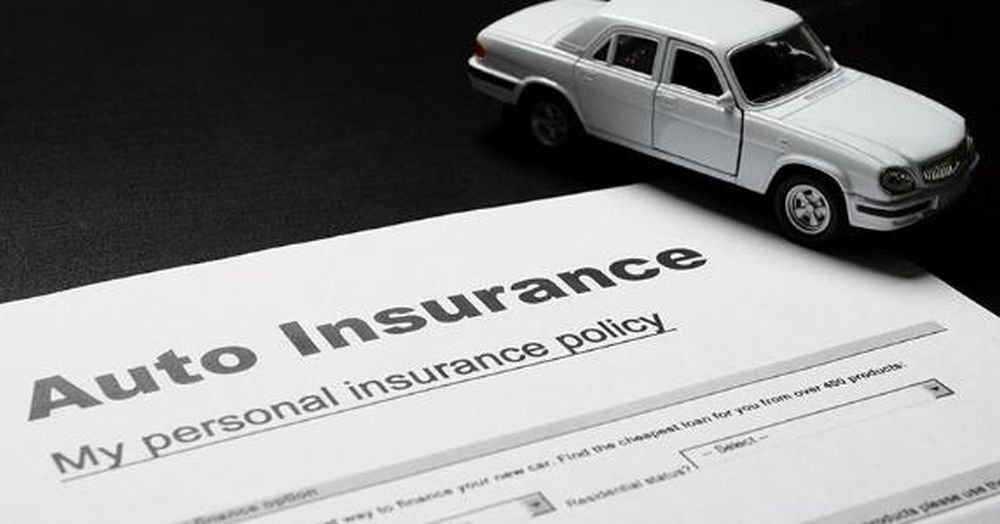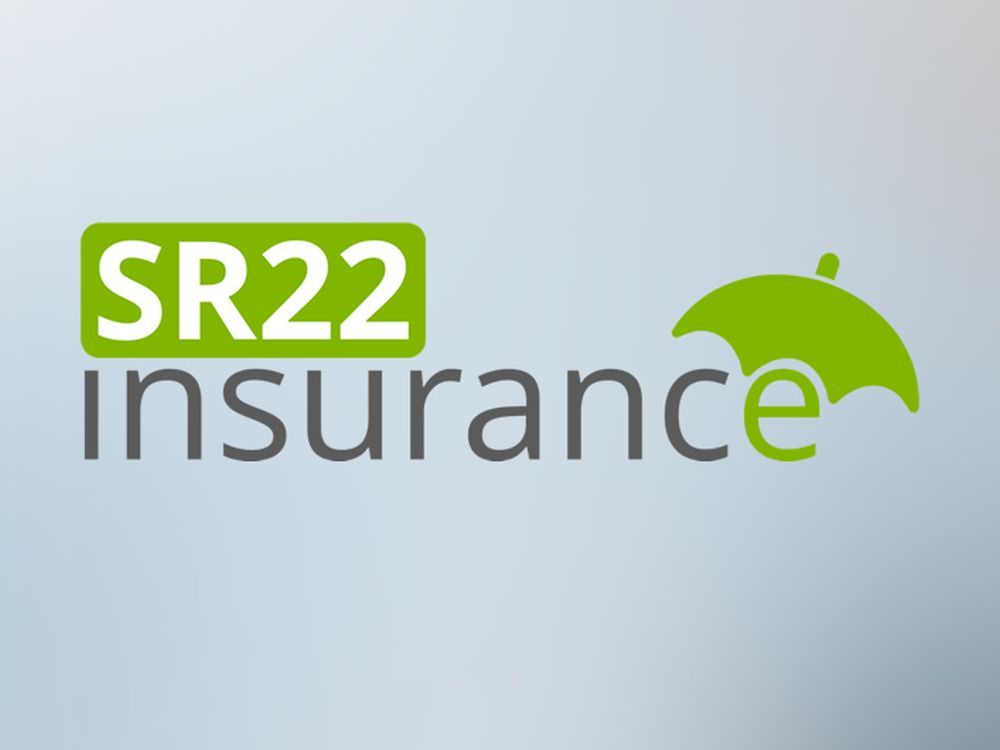Everything You Need to Know to File for SR-22 Car Insurance
Filing for SR-22 car insurance can be both time consuming and confusing but it doesnt have to be. Well give you the information you need, in easy-to-read form, to make the entire SR-22 filing process worry-free and simple. To be sure, having to file an SR-22 isnt pleasant; and youre probably already overwhelmed. But dont despair take a deep breath and read on.
For starters, you need to understand the basics. An SR-22 is a financial responsibility certificate, and the State Department of Motor Vehicles (DMV) requires that this certificate be on file for a certain amount of time in order for an individual to maintain a drivers license. This is especially true if you are involved in an accident or convicted of a drunk driving or other serious offense.
Next, you need to determine what insurance company you want to use. Many carriers offer SR-22 filing services, and its important to compare rates and coverage before making a decision. Be sure to read your policy carefully and understand any exclusions that may apply. You also need to decide if you want to set up a payment plan or pay the full cost of your policy up front.
Once you’ve chosen the right carrier for you, you’ll need to complete the paperwork. The carrier you select will provide you with an SR-22 form, which must be filled out completely and accurately. The form will ask for information such as your name and address, type of insurance youre applying for, dates that the SR-22 is required to be on file, and the amount of insurance coverage youd like to carry.
Once youve completed the paperwork, its time to get your policy in place. Your chosen insurance carrier will provide you with a policy number, and your SR-22 will be filed by your carrier with the DMV. You should keep a copy of your SR-22 form and policy information in a secure location. Doing so will help you stay organized and up-to-date on any changes in coverage and payments.
Its also essential to keep a record of your payment schedule. You must remain on top of your payments for the duration of the filing period if you let payments lapse, your SR-22 could be canceled and you will have to start the process again.
You can expect to have your SR-22 in place for the period of time required by the DMV. During this time, your SR-22 coverage may be periodically be reviewed and updated, usually for a fee. An adjuster may need to come to your home or vehicle to assess damage if you are in an accident. When the filing period ends, most states will require you to fill out a form indicating that you no longer need SR-22 coverage.
At this step of the process you might be asking, how much will this cost me? The cost of SR-22 car insurance will vary based on your state and individual information, such as your driving record and the amount of insurance you choose to buy. Generally speaking, drivers should expect to pay more for SR-22 coverage than what they would pay for standard car insurance, as the risk of an SR-22 driver poses a greater liability for the insurance company.
Now that you understand the basics of filing for SR-22 car insurance, the next step is to get started. You can easily get a quote on your toll-free number for a no obligation quote to get started.
You may also be wondering if you’re eligible for any discounts. Most carriers offer discounts to SR-22 drivers, such as safe driver discounts, multi-car discounts, and loyalty discounts. Also, many states offer discounted rates for customer who complete defensive driving or driver safety courses.
Now that we’ve covered the basics, let’s take a closer look at some of the finer points. For instance, if you need to file an SR-22 in one state and move to another, your policy may be adjusted to reflect your new state of residence. However, filing an SR-22 in multiple states at the same time is not possible. Additionally, you must provide your current address to the DMV so they can update your records and transition the SR-22 policy to the new state.
In other circumstances, it may be necessary for you to maintain separate policies for SR-22 for each state. This is especially common if you are found guilty in one state of an offense, such as a DUI, but reside in another state with a different set of laws and penalties. You should speak to your insurance carrier about state-specific requirements.
When it comes to re-application for SR-22 car insurance, there isn’t a set time frame for every driver. This will depend on the individual’s past driving record, the type of violation they’ve had, the amount of time that has elapsed since the initial violation, and the state you live in. Generally, the more time that has gone by since the violation, the less likely it is that you’ll need to re-apply.
You should also be aware that not all violations require SR-22 filing. This varies on a state-by-state basis and someDMV’s may require an SR-22 filing for some violations such as failing to show proof of insurance, speeding tickets, and reckless driving. While filing for SR-22 can be intimidating and confusing for some drivers, it is an important part of the process of maintaining a driver’s license.
Finally, it’s also important to note that if you have an SR-22 filing, it cannot be cancelled, regardless of the type or severity of the conviction. This means that if the SR-22 is dismissed for any reason, you must provide proof of other valid insurance to the DMV before the SR-22 car insurance will be released.
Now that you know the basics of SR-22 car insurance, let’s turn to the financial considerations. It’s no secret that filing for SR-22 can often be expensive and it pays to do your research to find the best deals. You can leverage comparison tools to get quotes from multiple providers and then make an informed decision about the best policy for you.
It’s also smart to shop around and look for discounts. Many insurers offer discounts for a variety of reasons, such as loyalty rewards, good student discounts, safe driver discounts, and customer referrals. Make sure to read the fine print to understand any exclusions or limitations that may apply.
When it comes to paying for your coverage, it’s important to strike the balance between affordability and long-term savings. Many insurance companies offer payment plans that allow you to pay your premium in installments over the course of several months. This can make SR-22 coverage much more manageable, and can often be the best option to ensure you don’t have to forgo coverage due to financial difficulty.
In terms of coverage, it’s essential to understand what type of protection you need for your SR-22. Liability only policies typically cost less, however, these policies only cover the costs of other people’s property and medical bills if you are at fault in an accident. You should also consider adding collision coverage to provide coverage for repairs or replacement of your vehicle and to ensure your rates don’t increase dramatically after an accident.
Finally, it’s essential to stay on top of your policy and payments. If you let payments lapse, your SR-22 car insurance could be canceled and you would need to be re-file for an SR-22. To avoid this, make sure to keep relevant paperwork organized and to keep up with all payments due in a timely manner.
Now that we’ve met out the basics of SR-22 car insurance, let’s explore some additional considerations. For instance, if you have been mandated to file for SR-22 but are unable to do so due to the cost, you may be eligible for state-funded low income liability insurance. Such programs are offered in some states, so it’s important to contact your local Department of Motor Vehicles to determine if you are eligible.
Additionally, you might consider a non-owner policy if you don’t currently own a vehicle but will be driving a friend or family member’s car regularly. Such policies are often more affordable than traditional policies, and they can provide the necessary coverage to meet the SR-22 filing requirements.
Lastly, it’s important to understand that SR-22 is a court-mandated form of insurance only, and does not provide bodily injury or property damage coverage of any kind. You should supplement your SR-22 car insurance policy by purchasing additional insurance to provide more comprehensive coverage.
There you have it everything you need to know to file for SR-22 car insurance. For most drivers, the process is straightforward and fairly straightforward. However, it’s important to do your research, shop around for the best rates, and remain diligent in keeping up with payments. With a bit of knowledge and persistence, filing for SR-22 car insurance can be a relatively straightforward process.
Now, let’s dive a bit deeper into the specifics of SR-22 car insurance. For starters, we’ll explore the criteria that insurers consider when determining rates. The most influential factor is your driving record, which is a history of your past violations and incidents. Most insurers use this information to determine the amount of risk they are willing to take on, and will adjust their rates accordingly.
It’s also important to consider the type of car that you drive. Some cars cost more to insure because they are expensive to repair or generally considered high risk. Additionally, some states require drivers to carry higher liability limits for certain types of cars. Therefore, it’s important to determine the best balance between coverage and cost when reviewing different policies.
Another factor that determines SR-22 car insurance costs is your age. States typically require younger drivers to pay more for their SR-22 policy, as they are perceived to be higher risk than more experienced drivers. It’s important to shop around for particular state-specific discounts to help reduce costs, such as safe driver discounts, or those available for taking a drivers education course.
And finally, the location where you park your vehicle may also play a role in how much you pay for your SR-22 policy. If you live in an area with a high rate of crime or vandalism, your policy may be more expensive. Additionally, if you park your car on the street instead of in a secured lot, you can also expect to pay more for your coverage.
All these factors are key to consider when shopping for SR-22 car insurance. However, armed with the right information, you can get an affordable policy that offers the coverage you need.
Another important aspect of filing an SR-22 is understanding the duration of your policy. Most insurers will require an SR-22 filing period of at least two years, but it can be longer depending on the severity and nature of your violation. Ultimately, the filing period set by the DMV will prevail.
It’s also important to note that some statutory periods are shorter than the filing period required by an insurer. For instance, if your license is suspended for a DUI, but your SR-22 filing period is three years, your license may still be suspended when the filing period expires. Therefore, it’s important to refer to your license status with the DMV and ensure that all required filings are completed.
Now that we’ve gone over the basics, let’s discuss some of the lesser known facets of SR-22 car insurance. One lesser known aspect is that you may be able to transfer your SR-22 to another state, depending on the circumstances and the rules enforced by your current state. This is especially useful if you move during the filing period for your SR-22. In such instances, contact the DMV in your new state, as there may be some differences in the documents you are required to submit.
Additionally, it’s important to note that some states require an operator’s certificate of insurance (aka an SR-26 form), in addition to the SR-22. The purpose of the SR-26 form is to notify the DMV that a driver has failed to continue their SR-22 filing. Such a form may be required in circumstances such as a lapse in payment or a violation of the terms of the policy.
An important takeaway here is that filing for SR-22 car insurance isn’t without cost or complications. It’s important to understand the laws that govern your situation so you can properly navigate the filing process and ensure you have the right coverage at the best available rates.
By now, you should have a good understanding of the process to file for SR-22 car insurance. However, there are some other important considerations to keep in mind, such as the laws and regulations governing SR-22 coverage in each state and the process for reinstatement of your license.
For starters, states may have minimum requirements for coverage, meaning you may need to purchase more coverage than you currently have if your state has more stringent requirements. Further, the cost of SR-22 car insurance may be affected if you choose to drop your policy or don’t pay your premiums, so it’s important to understand the consequences of such actions before making a decision.
Another key to reinstating your license is to make sure you meet all the required filing deadlines. Failing to do so may result in a lapse in coverage, which can lead to further penalties and an inability to reinstate your license.
Lastly, it’s also important to understand the process for reinstating your license after the SR-22 filing period has expired. Generally, you will need to fill out a form from the DMV, pay any applicable fees, and provide proof of other valid insurance to receive your license. Ultimately, the laws and regulations governing the reinstatement process vary from state to state, so you should consult your local DMV for guidance.
By now, you should have a solid understanding of the process and considerations for filing for SR-22 car insurance. We’ve just scratched the surface here, but keep in mind the most important thing having the right coverage at the right price. Undoubtedly, filing for SR-22 car insurance can be a complicated and time consuming process. But with the right understanding, you can find an affordable policy that meets your needs and provides all the protection you need.








